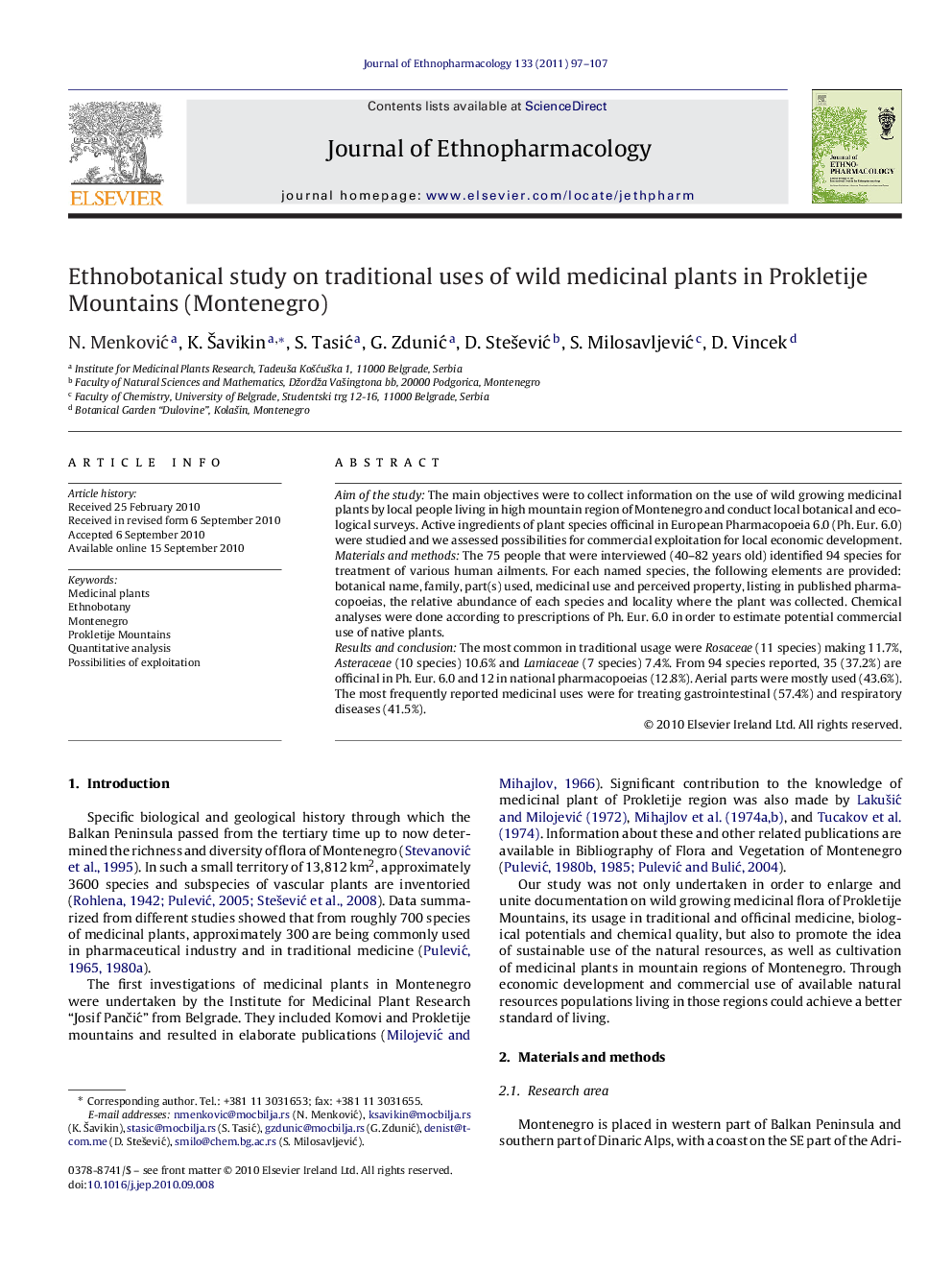| Article ID | Journal | Published Year | Pages | File Type |
|---|---|---|---|---|
| 2546039 | Journal of Ethnopharmacology | 2011 | 11 Pages |
Aim of the studyThe main objectives were to collect information on the use of wild growing medicinal plants by local people living in high mountain region of Montenegro and conduct local botanical and ecological surveys. Active ingredients of plant species officinal in European Pharmacopoeia 6.0 (Ph. Eur. 6.0) were studied and we assessed possibilities for commercial exploitation for local economic development.Materials and methodsThe 75 people that were interviewed (40–82 years old) identified 94 species for treatment of various human ailments. For each named species, the following elements are provided: botanical name, family, part(s) used, medicinal use and perceived property, listing in published pharmacopoeias, the relative abundance of each species and locality where the plant was collected. Chemical analyses were done according to prescriptions of Ph. Eur. 6.0 in order to estimate potential commercial use of native plants.Results and conclusionThe most common in traditional usage were Rosaceae (11 species) making 11.7%, Asteraceae (10 species) 10.6% and Lamiaceae (7 species) 7.4%. From 94 species reported, 35 (37.2%) are officinal in Ph. Eur. 6.0 and 12 in national pharmacopoeias (12.8%). Aerial parts were mostly used (43.6%). The most frequently reported medicinal uses were for treating gastrointestinal (57.4%) and respiratory diseases (41.5%).
Graphical abstractC.a. 400 plant species were recorded, among them 94 were reported to be used in traditional medicine by native population. Figure shows a ratio of total number of recorded species, species officinal in European Pharmacopoeia 6.0, and endemic species.Figure optionsDownload full-size imageDownload as PowerPoint slide
